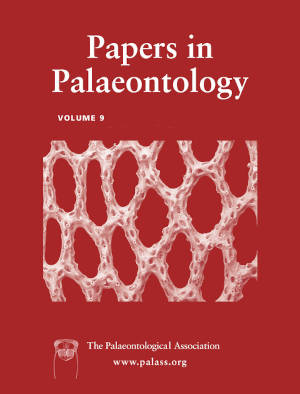Article: A possibly deep branching artiopodan arthropod from the lower Cambrian Sirius Passet Lagerstätte (North Greenland)
Publication: Papers in Palaeontology
Volume:
9
Part:
3
Publication Date:
2023
Article number:
e1495
Author(s):
Harry O. Berks, Morten Lunde Nielsen, Joseph Flannery-Sutherland, Arne Thorshøj Nielsen, Tae-Yoon S. Park, and Jakob Vinther
DOI:
10.1002/spp2.1495
Abstract
Abstract Artiopoda was a diverse group of Palaeozoic euarthropods that proliferated in the early Palaeozoic, epitomized by the ubiquitous trilobites. Their possible phylogenetic position outside mandibulates and chelicerates offers the potential for understanding the evolution of euarthropods in more detail. However, this opportunity remains unexploited given that identification of deep-splitting artiopodans remains to be fully explored. Here, we describe a new non-trilobite artiopodan from the lower Cambrian Sirius Passet Lagerstätte, North Greenland. Thulaspis tholops gen. et sp. nov. is a large species with a broad, domed head shield, followed by a trunk consisting of 15 thoracic tergites and a small pygidium, giving the body an ovoid appearance when viewed dorsally. Thulaspis is distinctive with its rounded genae and anterior thoracic pleural tips, as well as short pleural spines posteriorly. A heart-shaped hypostome with an anterior lobe is present. Appendages, partly obscured by the tergal skeleton, have many moderate length gnathobasic spines, and large flap-like exopods with a fringe of small setae. Cladistic analyses recover Thulaspis as the sister taxon to Squamacula, a genus found in the Chengjiang and Emu Bay Shale biotas, in either a polytomy with a number of artiopodan taxa or as a sister group to all other artiopodans, indicating an important role in understanding the roots of artiopodan anatomy and evolution.
